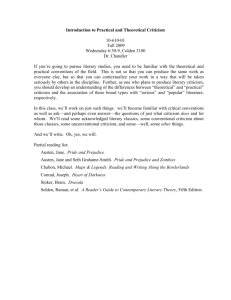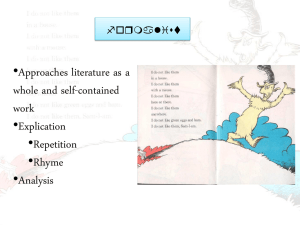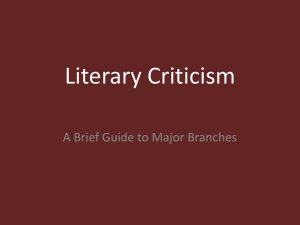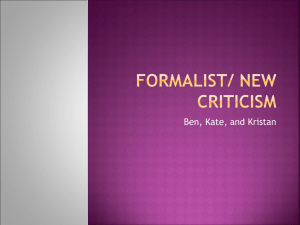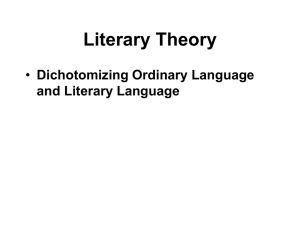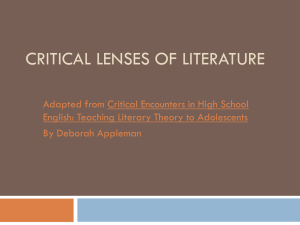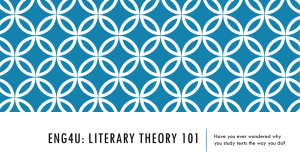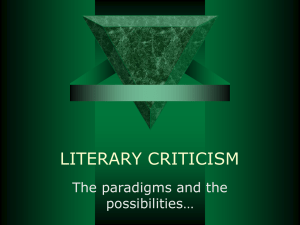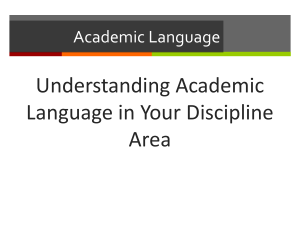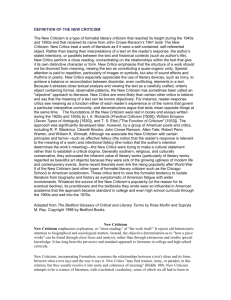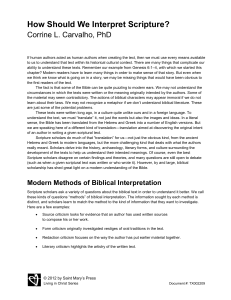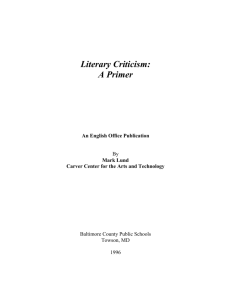LITERARY CRITICISM - The analysis of a literary text though various
advertisement
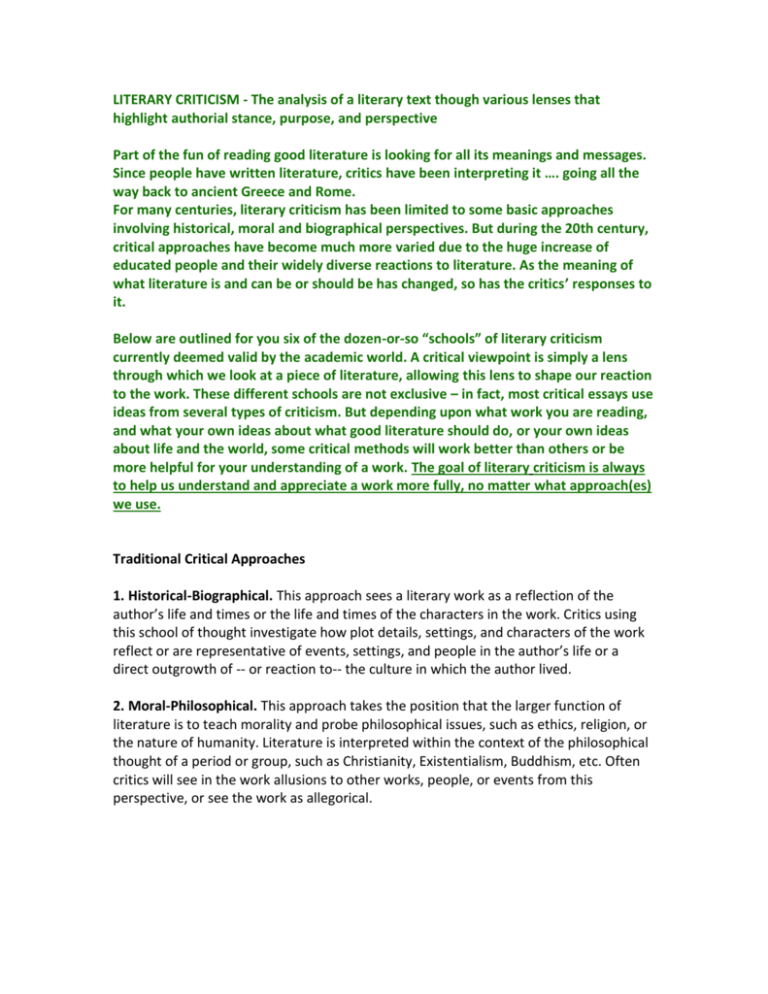
LITERARY CRITICISM - The analysis of a literary text though various lenses that highlight authorial stance, purpose, and perspective Part of the fun of reading good literature is looking for all its meanings and messages. Since people have written literature, critics have been interpreting it …. going all the way back to ancient Greece and Rome. For many centuries, literary criticism has been limited to some basic approaches involving historical, moral and biographical perspectives. But during the 20th century, critical approaches have become much more varied due to the huge increase of educated people and their widely diverse reactions to literature. As the meaning of what literature is and can be or should be has changed, so has the critics’ responses to it. Below are outlined for you six of the dozen-or-so “schools” of literary criticism currently deemed valid by the academic world. A critical viewpoint is simply a lens through which we look at a piece of literature, allowing this lens to shape our reaction to the work. These different schools are not exclusive – in fact, most critical essays use ideas from several types of criticism. But depending upon what work you are reading, and what your own ideas about what good literature should do, or your own ideas about life and the world, some critical methods will work better than others or be more helpful for your understanding of a work. The goal of literary criticism is always to help us understand and appreciate a work more fully, no matter what approach(es) we use. Traditional Critical Approaches 1. Historical-Biographical. This approach sees a literary work as a reflection of the author’s life and times or the life and times of the characters in the work. Critics using this school of thought investigate how plot details, settings, and characters of the work reflect or are representative of events, settings, and people in the author’s life or a direct outgrowth of -- or reaction to-- the culture in which the author lived. 2. Moral-Philosophical. This approach takes the position that the larger function of literature is to teach morality and probe philosophical issues, such as ethics, religion, or the nature of humanity. Literature is interpreted within the context of the philosophical thought of a period or group, such as Christianity, Existentialism, Buddhism, etc. Often critics will see in the work allusions to other works, people, or events from this perspective, or see the work as allegorical. 3. Formalistic Criticism. Using this type of criticism, a reader would see the work as an independent and self-sufficient artistic object. This approach is also sometimes referred to as the “New Criticism,” since it came back in vogue in the 1960s-70s, but it was originally an outgrowth of the "Art for Art's Sake" movement of the late 1800s. Formalistic critics assume that everything necessary for analyzing the work is present in the work itself and disregard any connection to possible outside influences such as the author’s own life or historical times. This criticism considers what a work says and how it says it as inseparable issues. It focuses on close reading, with sensitivity to the words and their various meanings. It searches for structures, patterns, imagery and motifs, and figurative language along with the juxtaposition of scenes, tone, and other literary techniques in order to come to conclusions about the meaning of the work. Newer Approaches to Criticism (20th century) 4. Psychological Criticism. This approach deals with a work of literature primarily as it is an expression – in fictional form – of the author’s personality, mindset, feelings and desires. It also requires that we investigate the psychology of the characters and their motives in order to figure out the work’s meanings. This school of criticism got its start with the work of Sigmund Freud, which incorporated the importance of the unconscious or sub-conscious in human behavior. Some typical “archetypal” Freudian interpretations include: rebellion against a father, id versus superego, death-wish forces, or sexual repression. Dreams, visualizations, and fantasies of characters in modern works usually stem from Freudian concepts. 5. Feminist / Gender Criticism. This approach asks us to use a wide variety of issues related to gender, concerning the author, the work itself, the reader, and the societies of the author and reader, to determine the stance of the work on the feminist continuum. These critics would argue that in order to achieve validity, a literary criticism that claims universality must include the feminine consciousness, since till very recently and in many instances yet today, works of literature and criticism have been maledominated and therefore necessarily skewed in their perspective. Feminist critics look for the development of male and female characters and their motives to see how the author and his or her times affected the gender roles in the work. 6. Sociological / Marxist Criticism. This viewpoint considers particular aspects of the political content of the text; the author; the historical and socio-cultural context of the work; and the cultural, political, and personal situation of the reader in relationship to the text. These critics tend to focus on the overall themes of the work as they relate to economic class, race, sex, and instances of oppression and/or liberation. Author, critic and reader bias is explored.
